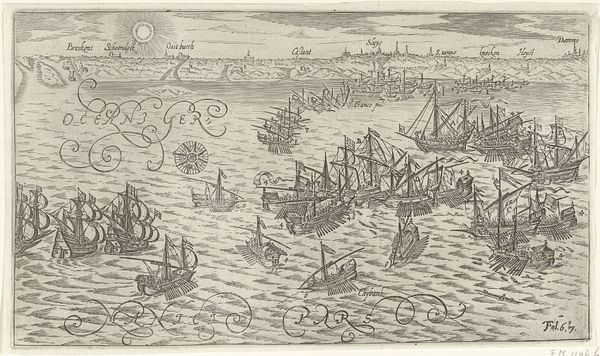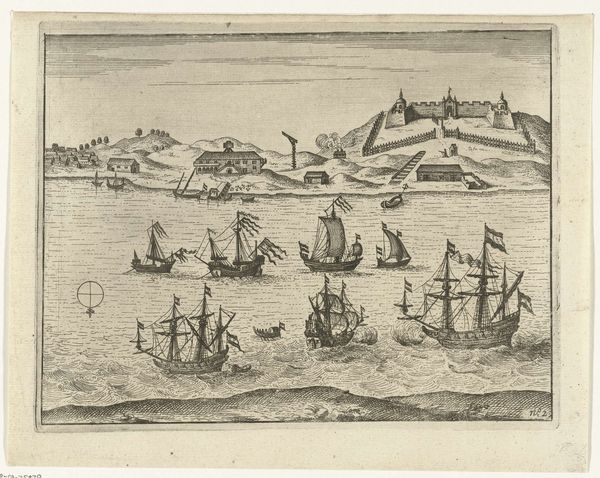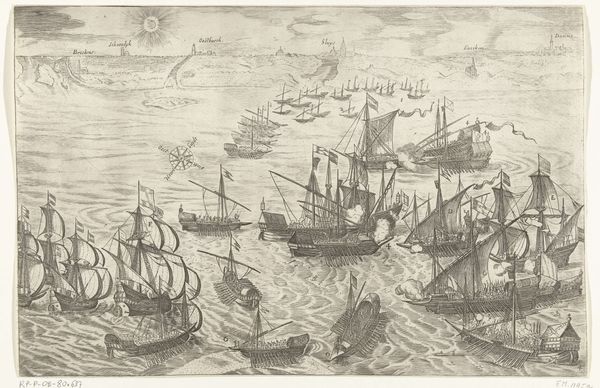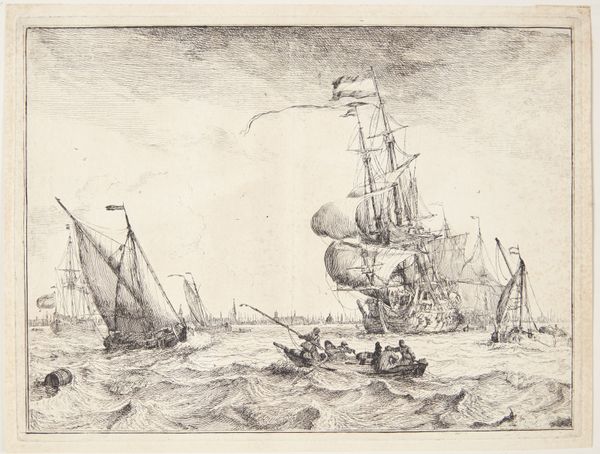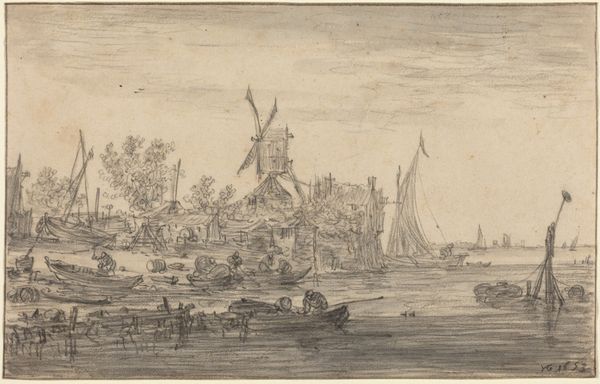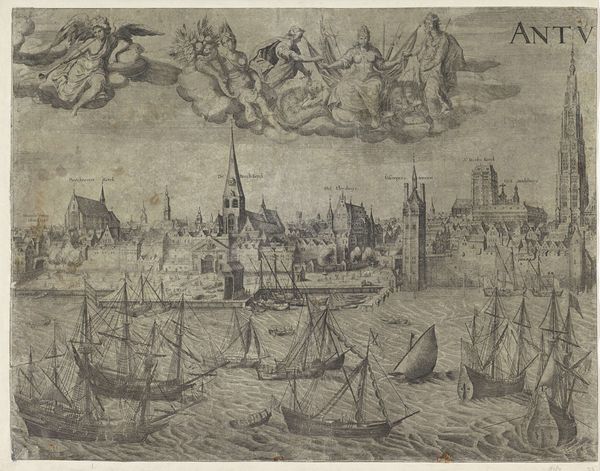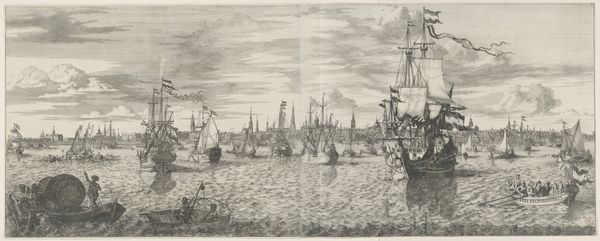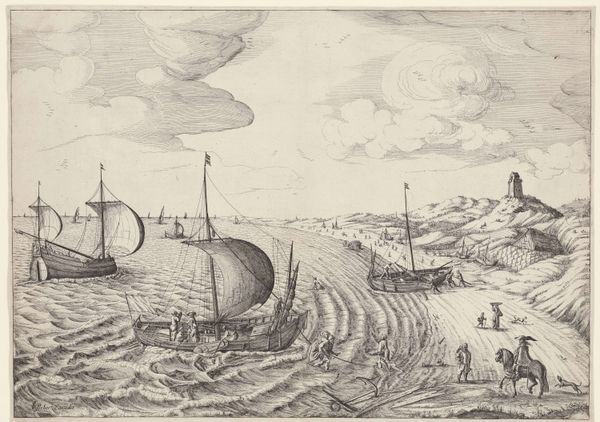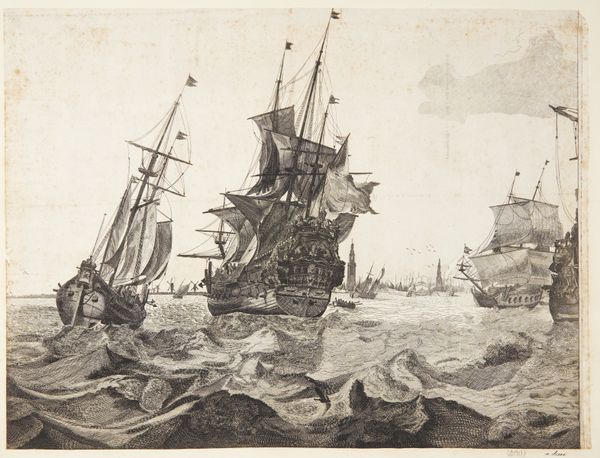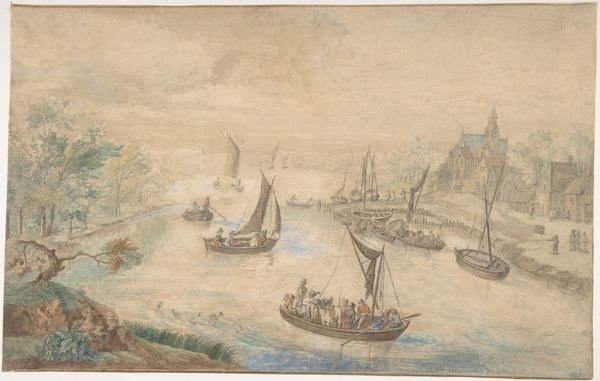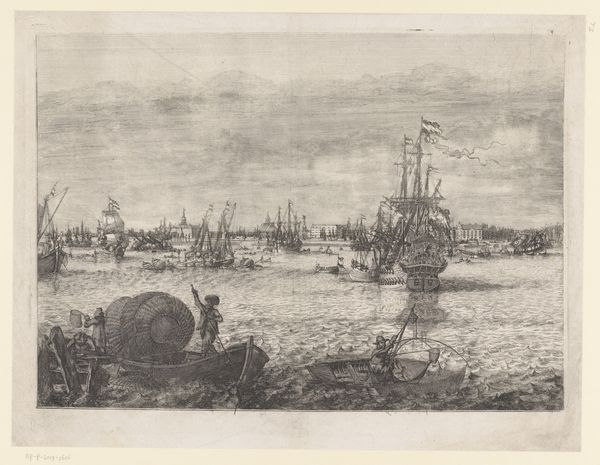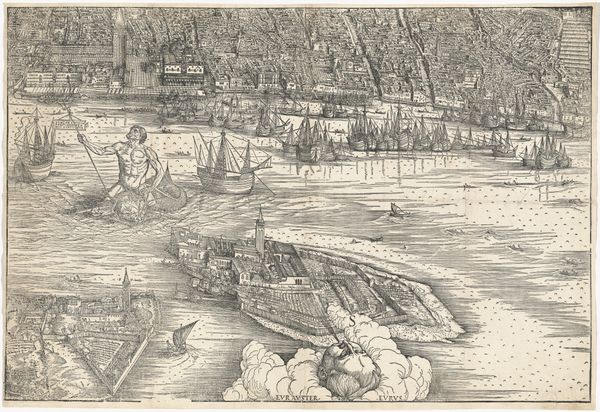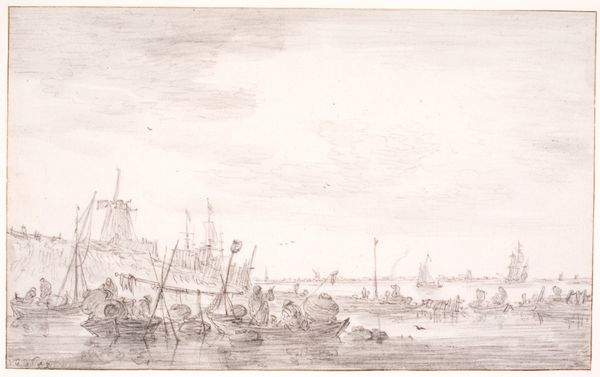
Jonah and the Whale on a Lake with Sailing Vessels 1546
0:00
0:00
print, etching
# print
#
etching
#
landscape
#
figuration
#
line
#
history-painting
#
northern-renaissance
Dimensions: 5 1/8 x 8 1/2 in. (13.02 x 21.59 cm) (plate)
Copyright: Public Domain
Curator: I’m struck by the serenity of this scene; despite the subject matter, it has a calming effect. Editor: Indeed! This etching, "Jonah and the Whale on a Lake with Sailing Vessels," created by Augustin Hirschvogel in 1546, presents a unique blend of biblical narrative and genre scene. The print uses a remarkable linework, don’t you agree? Curator: Absolutely, the delicacy and precision of the lines, particularly in rendering the ships and architectural details, demonstrate impressive skill and an astute eye for detail. I’m curious about the integration of the biblical story of Jonah into what seems like a bustling Northern European port scene. The whale is rather small in comparison with the other vessels. What would the role and impact of art have been at that time? Editor: Well, popular piety during the Reformation was often expressed through printmaking. Cheap and easily disseminated, prints offered ordinary people access to religious narratives, reinforcing cultural values and norms. I agree the whale looks quite small, though! It is easy to read into it and ask whether that tells us something of the cultural views. How does this influence the symbolism? Curator: Exactly! I suspect the relative smallness of the whale diminishes its monstrous nature. This in turn reframes Jonah’s tale less as divine punishment and more as a journey or quest. This allows for different, arguably humanist, perspectives on life's challenges, as Hirschvogel blends religious subject with everyday life and invites the viewer to participate in the historical context. Editor: The overall composition leads me to the assumption that the theme isn't solely the representation of a religious event. Perhaps, by merging these elements, Hirschvogel creates an allegory of human life as a voyage filled with both everyday events, represented by the ships, and the unexpected trials. It may convey the Renaissance perception of history itself as a dynamic interplay. The viewer is engaged to draw meanings from the historical context of the Renaissance. Curator: I agree entirely. Thinking about this artwork, I am drawn to ponder how it speaks of art's function during the religious and social changes of the 16th century. Editor: And for me, the power of Hirschvogel’s linear rendering allows us to discover nuanced readings and visual insights through the elegant details embedded in the etching.
Comments
minneapolisinstituteofart almost 2 years ago
⋮
This print by the pioneering landscapist Augustin Hirschvogel does triple duty: it depicts a picturesque seaside village, a parade of sailing vessels, and an Old Testament story. The biblical reference is the lone frolicking whale, perhaps inserted to explain the calm waters; when Jonah went overboard, the tempest subsided. In keeping with his early career as a mapmaker, Hirschvogel pinpointed the spot with the label "Jonah."
Join the conversation
Join millions of artists and users on Artera today and experience the ultimate creative platform.
